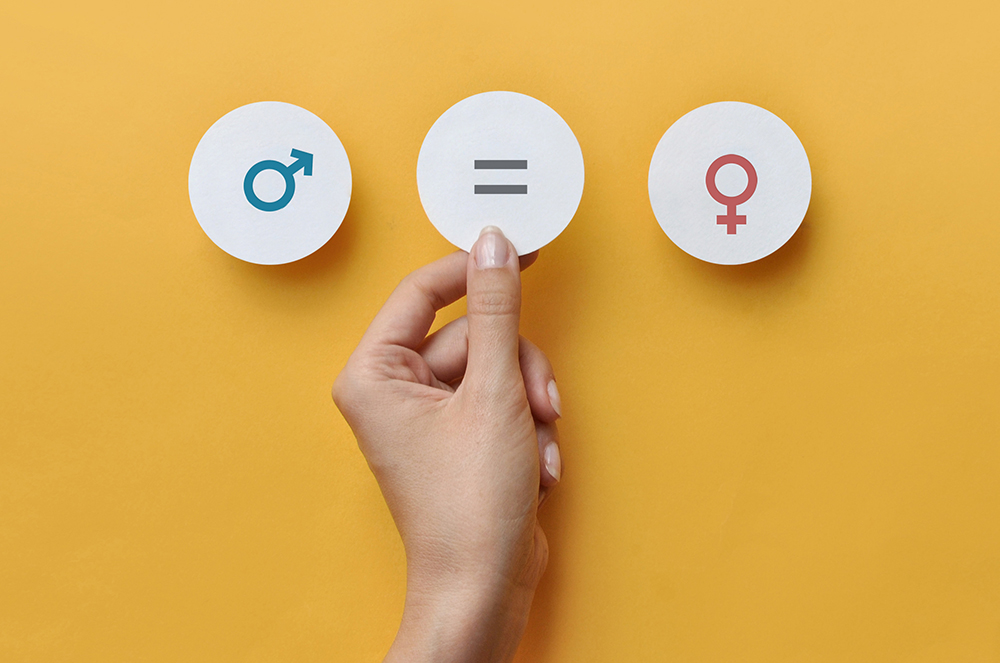Whilst attending the Roffey Park Institute’s ‘Women in Leadership: Going Beyond Rhetoric into Action’ webinar, one of the common themes that reappeared a number of times was the idea that social issues are causing a wider problem for gender equality within the workplace.
Social reproduction
One of society’s long-serving frameworks, social reproduction, is argued to encourage class and gender inequalities and imbalances. Social reproduction refers to the activities needed to ensure the reproduction of the labour force. A strong labour force ensures a strong and healthy economy. Social reproduction includes activities such as childbearing, rearing and caring for household members.
These tasks, historically, have been completed by women and girls and most of the time are unpaid work. This work, which requires unmeasurable amounts of time and energy, is done out of social obligation and/or love and affection. The prevalent issue here, however, is that due to these socially constructed gender norms, the way that women and men are expected to behave has caused an imbalance in class equality.
While women and girls undertake the tasks of social reproduction, traditionally the men and boys are out in the professional workplace. Traditionally, opportunities like this have come infrequently for women. Women’s labour – both paid and unpaid – is exploited and undervalued in a global system of production and social reproduction.
Gender as a social construct
Gender is a structural feature of society and like social class and race, can be used to socially categorise people and lead to prejudice and discrimination. Categorising tends to lead to assumptions and stereotypes, for example, gender often conveys the outdated message that girls are vulnerable and boys are strong. Another example is swarming a newborn girl with pink items and a newborn boy with blue items.
Although some assumptions can be harmless, assuming one’s traits, characteristics, strengths and weaknesses because of their gender can be dangerous. Although women are increasing their STEM representation, progress is slow and these workplaces are still dominated by men. One survey showed that 50 per cent of women in STEM jobs say they have experienced any of eight forms of discrimination in the workplace because of their gender, including job promotions and equal wages.
Evidently, when one is subject to detrimental consequences due solely of their gender, something is very wrong. Although we cannot change our history, we can start to change the way gender is seen as a social construct. It might be too late for the older generation as the concept of gender is too entrenched in unconscious bias but setting the framework for the next generations is possible.
Unconscious bias in men
Unconscious bias is how a person thinks that has been shaped by their life experiences. Sometimes they have beliefs and views about other people that might not be right or reasonable. Whereas bias is usually meant, unconscious bias is most commonly a decision influenced by false beliefs or assumptions. It is sometimes hard to differentiate between the two forms of bias.
This year’s International Women’s Day theme was #BreaktheBias and it could not be more relevant. Due to societal traditions, as previously mentioned, some men tend to unconsciously see women as inferior to themselves. Unsurprisingly, this is most prominently visible within professional settings.
For example, even today when children are asked to draw a CEO, they invariably draw a man in a suit. To attempt to eliminate unconscious bias, it is about having the right conversations but also at the right time. Having important conversations at a young age can help avoid biases learnt as children grow up.
How can men be allies?
Now there are many things that men can do to encourage total gender equality in the workplace. Dr Robert Coles, CEO of Roffey Park Institute, mentioned in the ‘Women in Leadership: Going Beyond Rhetoric into Action’ webinar was the need for the correct terminology and the need to talk with each other, not about each other.
Dr Coles began by explaining that one of the challenges of all themes of equality is the tendency to categorise large numbers of people into a single item. He went on to add that it is impossible to eliminate bias. We are all biased, whether we like it or not and we need to learn to manage it, be aware of it, and consider the language we use around the subject.
Eliminating concepts, ideas and opinions can have the dangerous consequence of silencing large groups of people. In a conversation, it is necessary to think about the terminology used. There is a need to be conscious in managing conversation and talking about things rather than to eliminate, isolate and silence things. If we are not careful, all we will get is silent unconscious bias.
Dr Coles explained that what is fundamental is how we start a dialogue with each other about these issues, rather than dialogue about each other. This is an issue for both men, women and gender-diverse people. Dr Coles drew on longitudinal research around this area that tells us whoever is the majority gender tends to be biased against, and have biases against, the minority gender. So, talking to each other is a far more effective way of dealing with issues than talking about each other.
Dr Coles gave an example that he had experienced. He spoke about the time that he went to two women in leadership events, one in London and one in Dublin. The one in London was fairly aggressive, Dr Coles explained. ‘from the point of view of the 20% or so in the audience that were men, it was aggressive and felt attacking from the majority group of women to the minority group’. The whole event was quite damning in terms of the language, he said.
The event in Dublin was very deliberately designed to be 50% men and 50% women and the instruction of the organisers was to talk to each other. Dr Coles explained ‘that if they saw any women huddling in a corner, or any men huddling in a corner, they were going to be in trouble. People wanted to talk to each other and in doing so they learned a lot’. We always do learn more talking to people rather than talking about people and we always learn more by challenging each other rather than feeling challenged.
Subsequently, the issue is of psychological safety or giving yourself a voice, and that applies to men and women equally. It is necessary to learn to listen to each other in order to understand why things are as they are now and how things can be different. Dr Coles finished by explaining his challenge to both sides; to learn to sit with, and talk about, one another other rather than sit with, and talk about, each other, separately.
Roffey Park Institute Whitepaper
Building on the themes emerging from our panel discussion and our experience in women leadership training, Roffey Park Institute has produced a Whitepaper exploring Female Leadership in the Workplace. This paper aims to uncover the evidence on the barriers women are facing in the workplace, and the organisational strategies that can help to address these issues and foster gender balance.
This paper shares and help you to understand the following factors that are identified as key to enabling women’s success in organisations:
- Commitment and accountability from company leaders to drive change for a more inclusive workplace
- Building awareness of unconscious bias throughout the organisation, and identifying policies or practices that are contributing to it
- Treating gender equality as a business imperative and linking it to the company’s purpose and values
- Using data to drive decisions on actions the organisation can take to improve gender balance
- Embedding constant conversations and education on the issues to be addressed, such as intersectionality and psychological safety





